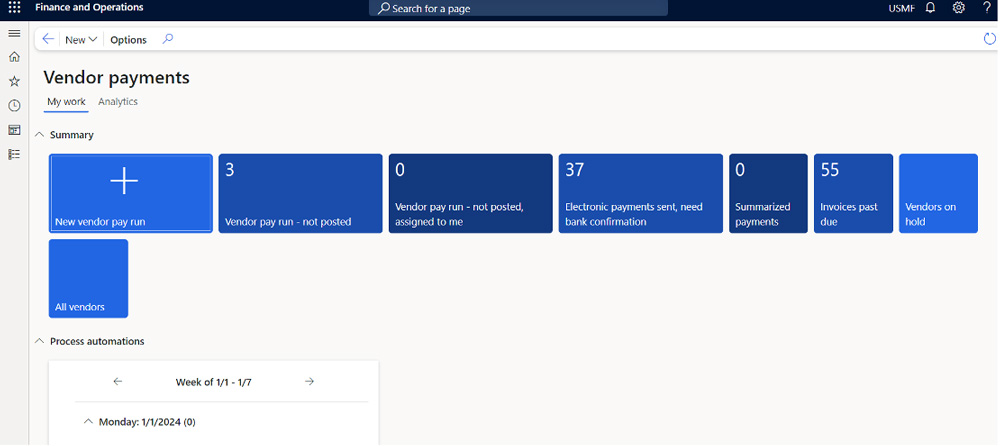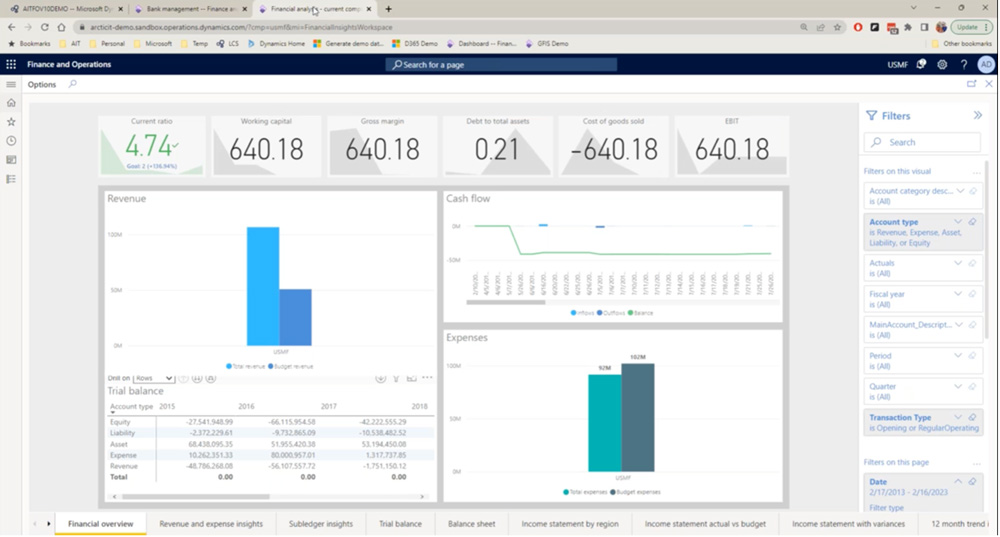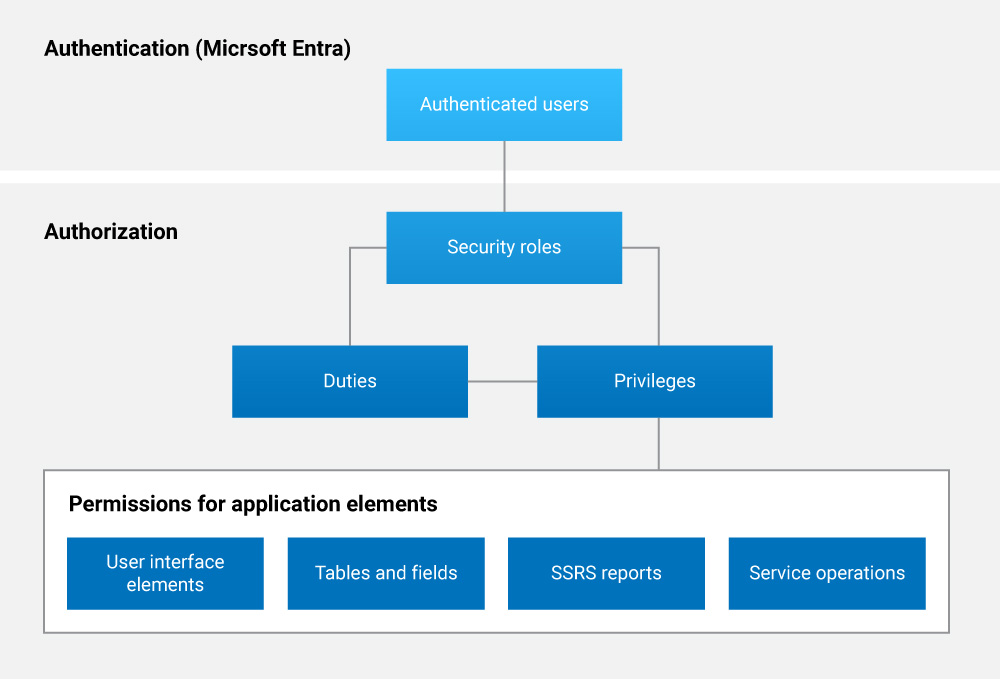Microsoft Dynamics 365 is an industry-leading ERP solution for companies that want to streamline processes and enhance employee experiences. This software has advanced analytics, streamlined integration capabilities, and configurability that can improve how your organization runs its finance and supply chain operations.
Microsoft Dynamics 365 is a suite of intelligent business applications. It combines the features of CRM and ERP to assist companies with increasing productivity and simplifying processes. Since Microsoft Dynamics 365 is cloud-based, users can access the system from anywhere while never worrying about updates and maintenance.
Organizations can also customize or “configure” Dynamics 365 for specific needs. In this article, we will focus on ways you can configure Dynamics 365 Finance to optimize your operations.
Define Your Business Needs
Before you begin customizing Dynamics 365 Finance, it is vital to map out your business needs. This entails defining the ERP workflows and processes that must be added or upgraded. Once you have pinpointed these requirements, you can begin charting them to the system’s current functionality and decide what customizations are necessary.
A key component to these requirements is thinking through and documenting the requirement as well as associated test cases including the expected inputs and results. This will greatly help with the design and testing of the needed customizations throughout the development and deployment processes.
The important types of test cases to consider as follows:
- Functionality Test Case
- User Interface Test Case
- Unit Test Case
- Integration Test Case
- Performance Test Case
- Security Test Case
- Database Test Case
- Usability Test Case
It’s important to note that this process, if not done correctly, can cause headaches down the road. Working with a Microsoft implementation partner is highly recommended to ensure you’re following best practices with expert-guided steps for a successful system configuration.
Customize Dynamics 365 Finance Functionality
Once requirements for customizations are known, there are many ways to customize the functionality in Dynamics 365 – and here are just a few.
Customize via workspaces: Workspaces in Dynamics 365 Finance offer a customized user interface that is specific for every user role. You can customize the charts, fields, and layout in a workspace to satisfy the requirements of a particular group or user.

Customize via form personalization: Dynamics 365 Finance lets users personalize forms by moving, removing, or adding fields. This is an easy way to modify the user interface to satisfy specific business needs.

Customize via extensions: Dynamics 365 Finance supports the creation of extensions, allowing developers to add custom functionality to the system without changing the core code. This technique is worthwhile as it guarantees that any upgrades to Dynamics 365 Finance won’t overwrite your customizations.
Customize via business events: Developers can add code to the Dynamics 365 Finance architecture that activates when specific business events occur in the system. This allows external systems to receive notifications from Finance, which in turn can perform actions in response.
Customize via Power Apps: Dynamics 365 functionality can be extended in many ways with Microsoft Power Apps. Whether it’s the creation of custom interfaces that match specific business requirements or a custom form inserted into the system, the possibilities are endless with Power Apps.
Customize via Power BI: Embedding Power BI in Dynamics 365 Finance offers a powerful way to integrate and display custom Power BI reports directly within the Finance environment. This integration enhances data visualization and decision-making processes for businesses. Here’s how it works:
- Data Integration: Dynamics 365 provides rich datasets that can be used as the foundation for Power BI reports. These datasets are typically based on the vast array of financial and operational data captured by Finance, including sales, inventory, procurement, and financials.
- Custom Report Creation: Users can create custom Power BI reports using the integrated Power BI Desktop. This tool allows for complex data modeling, visualizations, and analytics. You can these robust capabilities to transform your data into insightful, interactive reports tailored to specific business needs.
- Embedding Reports in Dynamics 365 Finance: Once the custom reports are created, they can be embedded directly into the Finance user interface. This embedding is typically done via the Power BI integration framework within Dynamics 365, which allows your reports to be displayed as part of the workspace or specific functional pages.
- Interactive Dashboards: Users can interact with the Power BI reports directly within Finance, drilling down into data, filtering, and slicing the information to gain deeper insights

Configure & Customize Dynamics 365 Finance Security Roles
As part of any customization in Dynamics 365 Finance, the security impact and potential impact to security roles must be considered. Microsoft Dynamics 365 is configured with role-based security via security roles, so users only have access to system information they are authorized to view. For example, a System Administrator role has access to the entire system, while an Accountant role is only able to view specific parts. You aren’t dealing with several user interfaces, only one. Everyone has access to just what they need in a consistent format, making working together effortless.
Beyond security roles are duties and privileges. These are typically assigned to more than one role, but they correspond to different parts of your business process. A duty contains privileges, which are actions a user can take such as cancelling a payment or maintaining a bank transaction. Defaults for duties and privileges are provided out-of-the-box with Dynamics 365 Finance, but the System Administrator can modify them as needed to best fit your needs.
Within privileges are various permissions for application elements including user interface elements, tables and fields, SSRS reports, and service operations.

Engage with Certified Dynamics 365 Consultants
When it comes to customizing Dynamics 365 Finance, engaging with a company that’s experienced with Microsoft Dynamics 365 implementations is crucial. Arctic IT is a Microsoft Gold Partner with over two decades of experience implementing and supporting Dynamics products. Our consultants can help you recognize the best customization approach, overcome common challenges, and take advantage of modern process best practices. Schedule a consultation with our team today.

By Matt Borkowski, Director of Business Application Sales at Arctic IT

